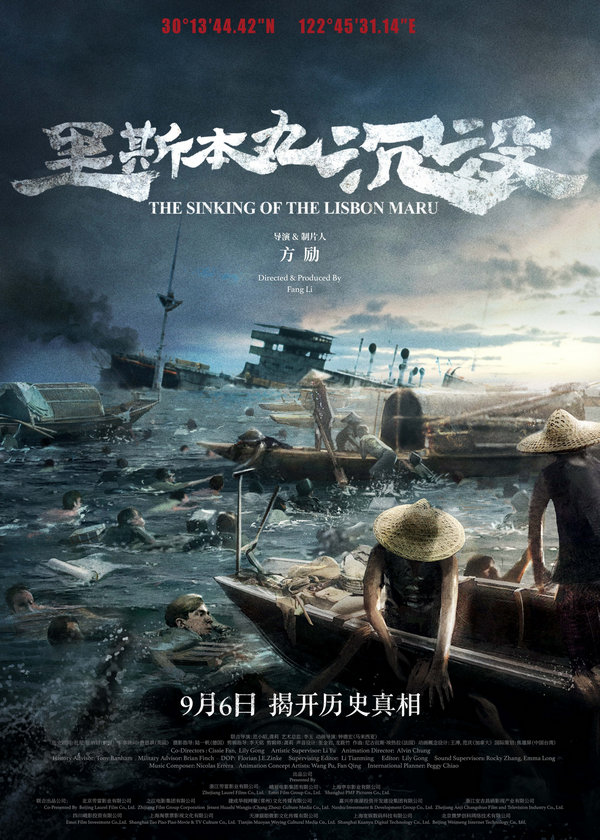

Since early September, filmmaker Fang Li has traveled to many cities to host nearly 100 promotional events for one of his most challenging works, The Sinking of the Lisbon Maru.
The documentary, which has consumed eight years and 80 million yuan ($11.2 million), chronicles his investigations into a titular incident during World War II — a Japanese ship that carried 1,816 British prisoners of war from Hong Kong to Japan in October 1942.
Tragically, the cargo liner was torpedoed by the USS Grouper submarine. Japanese forces confined the POWs and abandoned them to their fate, even assigning a team of soldiers to shoot any prisoners attempting to escape after the main troops evacuated. Some of the POWs managed to escape, with 384 British prisoners rescued by over 200 Chinese fishermen in the sea near Dongji Island in Zhoushan, East China's Zhejiang province. Most survivors were recaptured by Japanese troops the next day, but three were hidden by villagers.
Fang and his team did their best to find core parties and descendants in the United Kingdom, United States, Japan and China, getting close to the truth about the tragic sinking.
Narrated in a restrained and objective perspective with profound materials, the documentary has won high acclaim, obtaining 9.3 out of 10 points on the popular review aggregator Douban, making it the highest-rated documentary on the platform this year.
Currently, the film, which debuted domestically on Sept 6, has grossed over 43 million yuan at the box office, far exceeding the producers' original estimation.
Its high acclaim and box-office success have drawn attention from industry insiders and critics, especially after it was selected as China's submission in a bid for the Oscars' Best International Feature Film category in late September.